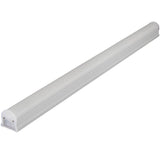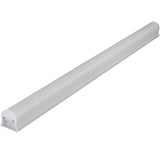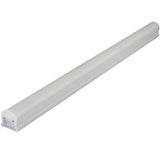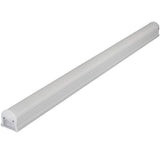Occupant Sensor Lighting Control Provides Cost Effective Retrofit Options
Posted by Dave on for ProLampSales

When it comes to saving energy, OFF always wins. Lighting is no exception.
At work, when you head to a meeting in a conference room that is used maybe three hours a day, are the lights already on even if you are the first to arrive, or, do they automatically switch on when you enter? And then switch off when the meeting is over and the room is empty?
When you go down the hall to a lavatory, do the lights come on as you enter, or are they always on?
When you leave work in the late afternoon, do the lights go off progressively as the building empties of staff?
The answers to these questions will certainly vary, but walk around most urban centers after dark and the illumination emanating from floor after floor of windows provides a telling answer - empty buildings are often in full ON lighting mode.
To be fair, many buildings are occupied at all times of day or night, even if only by cleaning crews. And while some buildings may use time of day controls to automatically turn some or all lights off at specified times, the appeal of sensor controlled lighting is that it responds dynamically to changing occupancy.
Occupancy sensor types include passive infrared and ultrasonic. In some cases, both technologies are incorporated in an occupancy sensor unit.
Let's look at two case studies to demonstrate how occupancy sensors provide a relatively inexpensive, automatic way to respond to changing conditions in a space and reduce energy costs.
St. John's University Saves With Occupant Sensors Throughout Campus
An urban university in Queens, New York, the school includes over 30 buildings spread over 100 acres. 20,000 students a year attend St John's.
The administration set a goal of reducing energy costs campus-wide using retrofit technology that provided high annual ROI. Occupancy sensor controls were chosen as the best approach to meet the target savings goals.
Because of the many types of buildings and upgrades that had occurred over the years, the challenge for controls manufacturer Leviton and contractor Energy Conversation Supply, Inc was to sort through all the light fixture types and applications to determine the best occupancy control for each space.
Ultimately, a mix of ceiling and wall mount passive infrared, ultrasonic and multi-technology sensors were installed in 90% of classrooms, laboratories, auditoriums, cafeterias, hallways, and offices on campus.
The occupancy sensor retrofit saved the university over $13,000 in annual energy costs in year one with a 9-month return on investment.
By carefully selecting the sensor locations in each space and setting the time delay before lights turn off, occupancy sensor retrofits in spaces such as these at St. John's minimize the impact on occupants and help make the control strategy seamless.
WalMart Demonstrates Sensor Controlled Lighting in Unique Application
With a strong commitment to sustainability, WalMart has proceeded on several fronts over the years to achieve its stated goals of 100% renewable energy use and zero waste.
In one unique application, WalMart partnered with Watt Stopper / Legrand to use LED display lighting and occupancy sensors to upgrade the efficiency of the existing fluorescent lighting in refrigerated food cases. Normally the lights in these food cases burned 24 hours a day.
To test the concept, LED lights and occupancy sensors were installed on refrigerated cases in two WalMart stores. When the sensors detect motion in the store aisles, case lights turn on as customers approach. The lights then turn off soon after customers leave the "buying" zone near the cases.
According the WalMart engineers, several benefits emerged:
- Unlike fluorescent lights, LEDs can be switched on and off in cold temperatures without any impact on lamp life. The considerable OFF time increased the already long rated life of the LED lights.
- To maximize energy savings and LED life, the sensor time delay was set to a minimum of 30 seconds which also ensured minimal impact on customers.
- Data loggers were installed to record actual lighting ON and OFF times. The results showed that the LED case lighting would be turned OFF by the sensors over 40% of the time.
- The overall energy savings realized by changing from fluorescent case lights to occupancy sensor controlled LED lights turned out to be 92%. Part of savings was attributed to less refrigerated compressor run time because of less heat generated by the LEDs and the substantial time when the lights were OFF altogether.
Featured Products (View All)
- 0 Comments
- Posted in Controls, Energy Efficiency, Retrofits
0 Comments




